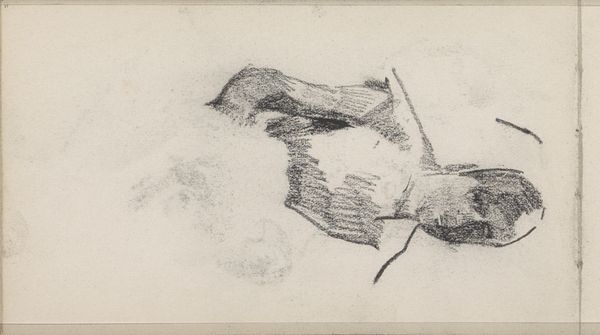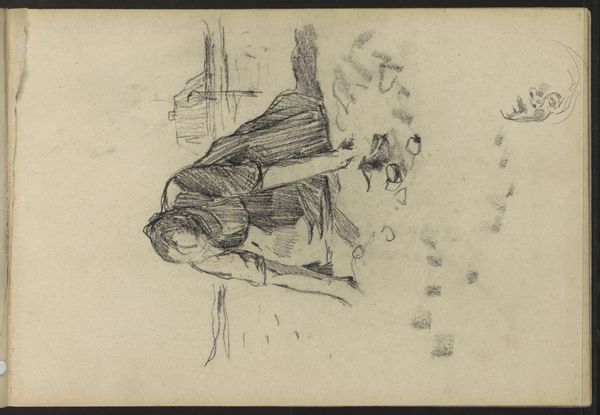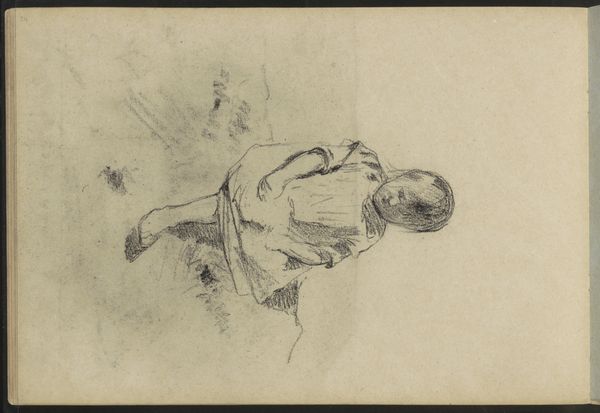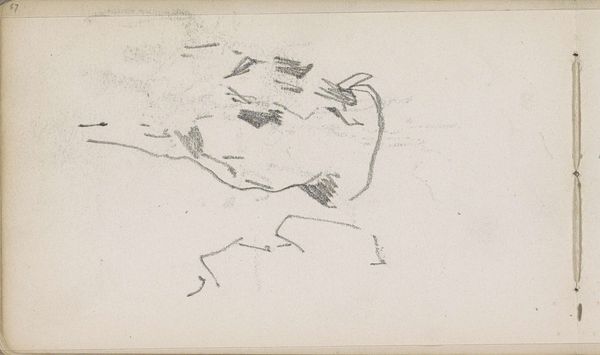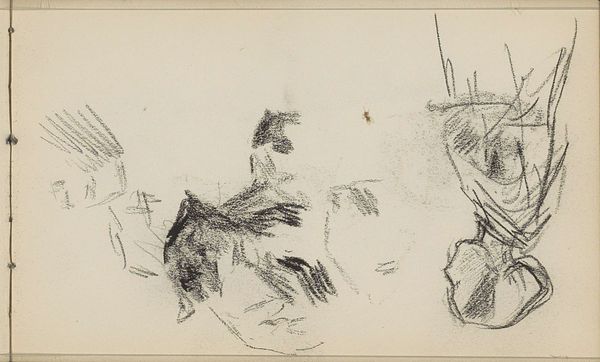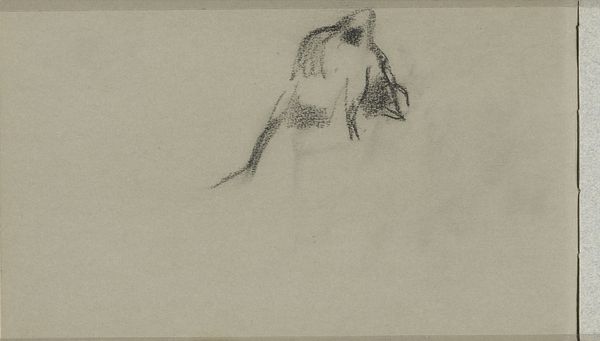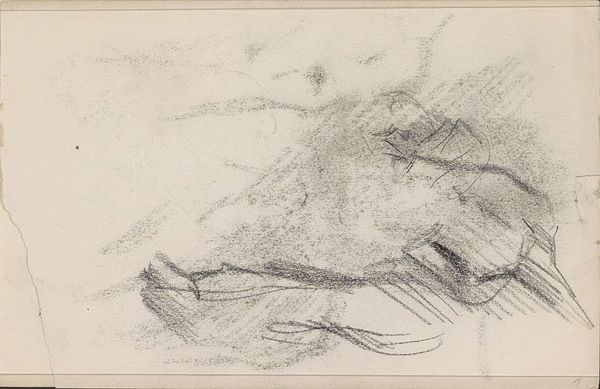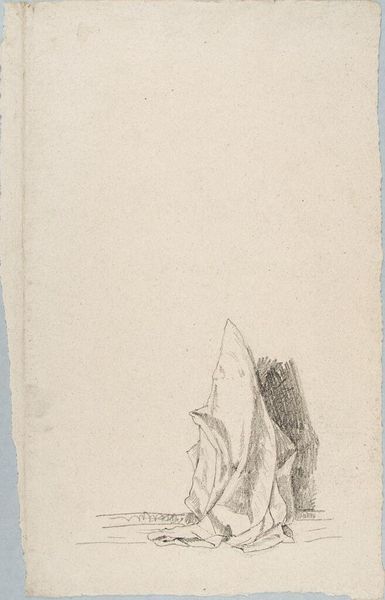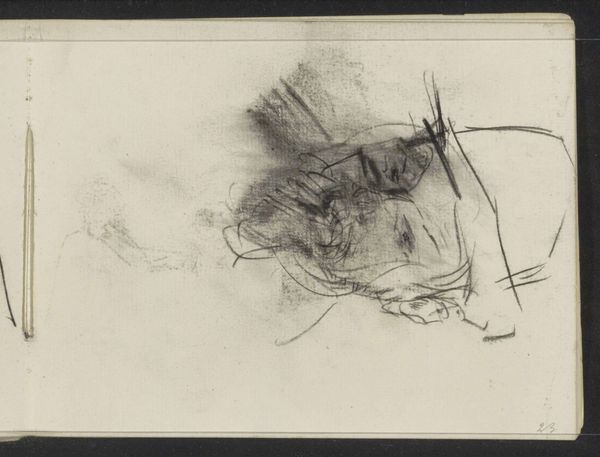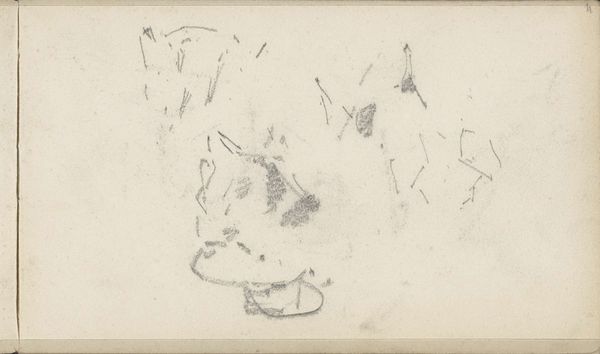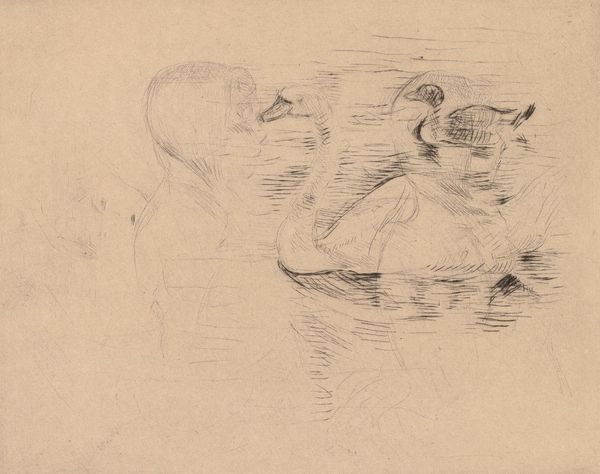
drawing, pencil
#
portrait
#
drawing
#
amateur sketch
#
toned paper
#
light pencil work
#
pen sketch
#
pencil sketch
#
personal sketchbook
#
ink drawing experimentation
#
pen-ink sketch
#
pencil
#
sketchbook drawing
#
sketchbook art
#
realism
Copyright: Rijks Museum: Open Domain
Editor: Here we have George Hendrik Breitner's "Hoofd, mogelijk een vrouwenhoofd met muts," or "Head, possibly a woman's head with a cap," created sometime between 1883 and 1885. It's a drawing rendered in pencil, currently housed at the Rijksmuseum. It feels quite immediate and raw. What strikes you about this work? Curator: Well, immediately I’m drawn to the visible labour here. You see the marks of the pencil so clearly. It’s not about some perfect illusion; it's about the process, the application of graphite to paper. Look at the varied pressure, how Breitner experiments to achieve tone, a sense of volume and space with incredibly limited means. The choice of toned paper itself suggests a conscious consideration of materials and their effects, influencing the overall visual texture. Editor: That’s interesting! It definitely feels less about the woman herself and more about how it was made. Would it be fair to say that this sort of sketch challenges the divide between art and pure craft? Curator: Absolutely! It elevates the “craft” of drawing – the material handling and mark-making – to the level of artistic expression. Think about where he might have been, producing this – the social conditions. These sketches allow us to analyze how the artist works in different contexts; possibly a studio or more likely a quick street scene, to be then worked on and sold. Does it look like a quickly, perhaps even furtively captured study, do you think? Editor: I can definitely see that, the haste. The lines are quite energetic. Knowing it could be from life, do you think that also shifts its value or meaning? Curator: Undeniably. It implicates the viewer in the act of witnessing, almost as if we are standing alongside Breitner, observing and recording life as it unfolds, economically yet full of artistic intention. Seeing it this way makes me appreciate how something produced seemingly spontaneously can also encapsulate profound ideas about materiality, labor, and perception. What do you think is most evocative for you after considering the materiality? Editor: I agree, examining the materiality made me appreciate the skill involved and the unique cultural context!
Comments
No comments
Be the first to comment and join the conversation on the ultimate creative platform.
